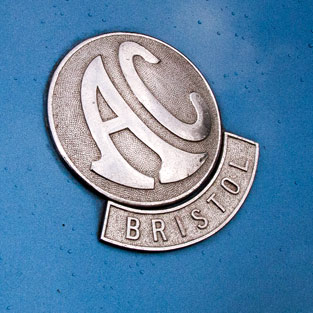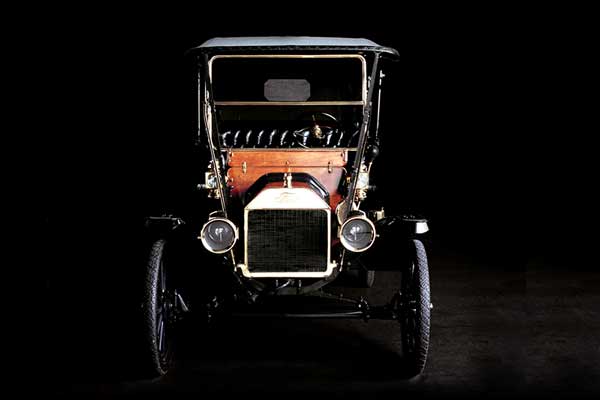Ford cars history
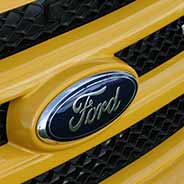
Ford cars history – famously the first marque to construct cars on a moving production line, Ford is an American giant that has been producing vehicles for over a century.
It continues to be one of the world’s largest automobile manufacturers. Over the years Ford Motor Company has come a long way from its Model Ts that were famously only available in black (to start with anyway). Ford now offers a wide range of cars from popular family cars to muscle cars and even a supercar.
Ford – the early years
Born in Michigan in 1863, Henry Ford trained as a machinist and craftsman. After designing and building his own car he designed a car for the Detroit Automobile Company (later Cadillac) but left to start up his own firm.
He had experienced some initial failure to get a road car into production at his own Henry Ford Motor Company (later to become Cadillac).
The first Ford production car was the Model A of 1903. The car was powered by a 1668cc flat-twin engine mounted under the body that drove epicyclic gears via a chain. The engine produced 8bhp, giving the car a top speed of 28mph.
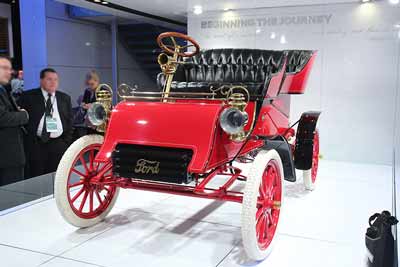
1903 Ford Model A – the oldest surviving Ford car
While the Model A got Ford up and running (and into the black financially), things really took off for Ford in 1908 with the launch of the Model T (or ‘Tin Lizzie’).
By 1913 Ford had become the first car manufacturer in the world to use a moving production line. This reduced the time it took to build a Model T from 12.5 hours to 1.5 hours. Production started in the USA but Ford quickly opened car factories in Denmark, Germany, Ireland, Spain and at Trafford Park in the UK.
When Model T production ended in 1927, Ford had built 15,000,000 Model T cars and the automotive world was changed forever.
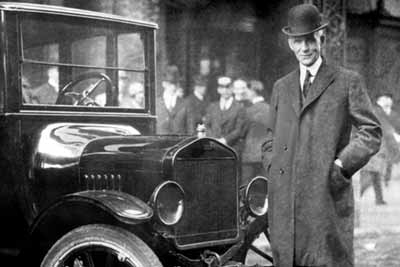
Ford Model T and Henry Ford
The Ford badge
Ford’s blue oval Badge has been around for over a century and remains relatively unchanged.
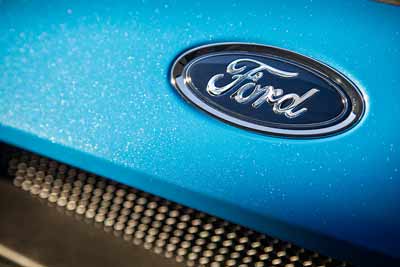
Ford Badge
The familiar Ford script was designed by Childe Wills, designer of the Model T’s planetary transmission, and first appeared inside an oval in 1912.
The more familiar blue oval made its debut appearance in 1928 on the Model A, a standardised version of which would eventually appear on all of its cars and was first introduced in the mid-seventies.
The Fifties and beyond
It wasn’t until the 1950s that newly launched cars became as synonymous with the company name as the Model T. The first of these was the stylishly designed Thunderbird, boasting a 198hp V8 engine and a top speed of 115mph.
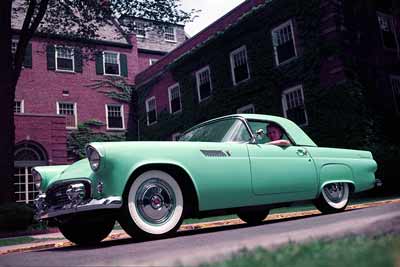
1955-57 Ford Thunderbird (1st Generation)
The Thunderbird was the first sign of diversification for Ford. It would be followed in the sixties by American muscle cars like the Mustang, British bestsellers like the Cortina and Escort, and racing cars like the GT40. The GT40 would go on to win the famous Le Mans 24 hour race four years in a row.
Ford today
Henry Ford died on April 7, 1947, he was 83 years old. Probably the most influential person in the history of the motor car, more than 50 years after his death, in 1999, Forbes magazine named him “Businessman of the Century,” and in 2012 a History Channel documentary highlighted him as one of “The Men Who Built America.”
Today Ford is (currently) one of the top five car manufacturers in the world. In 2008 the company managed to survive the financial crisis unscathed and without government assistance (unlike home rivals Chrysler and General Motors).
In the UK Ford currently sell the Ka, Fiesta, Focus, Mondeo, EcoSport, Kuga, C-Max. S-Max, Mustang and Galaxy.
In 2016 the company launch a new Ford GT supercar that will compete at the Le Mans 24 Hour Race 50 years after the GT40’s legendary 1-2-3 finish.
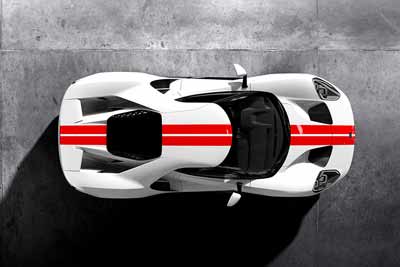
2016 Ford GT supercar



